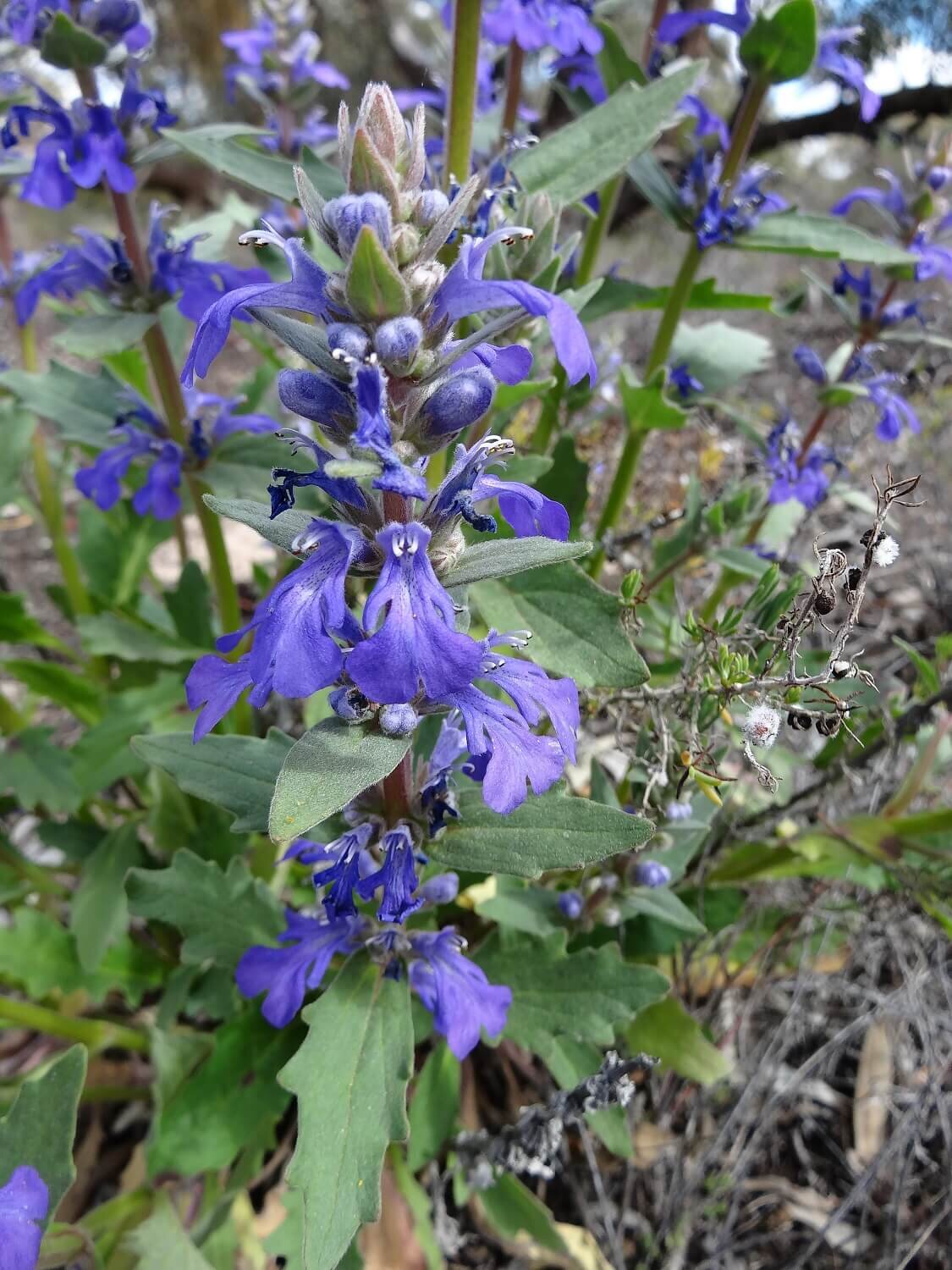Grand flowers in the Mallee
"Just pack it like a salad," he said.
Well, I've never sent a salad to Sydney, but I boxed up eight of these Austral Bugal plants (Ajuga australis) and posted them off, hoping they would arrive before turning to mush. They are destined for the National Herbarium of NSW where Dr Trevor Wilson is reviewing the taxonomy of the species.
Austral Bugle is the only Australian species of Ajuga. It is found throughout eastern Australia but it looks quite different across its range. Seriously, I’ve looked online and some of the northern forms are just dull, with tiny flowers. Plant taxonomists have long suspected that Austral Bugle is a species complex, and is not just one species, but a number of species lumped together.
VicFlora suggests, and Trevor agrees, that our "robust Mallee variant" may actually be Ajuga grandiflora. This makes sense to me. Things in the Mallee are often bigger and grander than elsewhere! Trevor will be examining the morphology (looks) and molecular data (genetics) to decide whether to keep Ajuga australis lumped, or to split it into a number of species.
There are about 64 species of Ajuga worldwide. Some are considered medicinal, and many are popular in gardens. The introduced Common Bugle (Ajuga reptans) has jumped the fence and is now an environmental weed.
Although Austral Bugle is available from some nurseries, I think it is under-rated. This is an awesome plant to grow in your garden. We found a plant growing in the middle of a track so I dug it up for our home garden. I put it in a bucket of water and forgot about it for a week. When I rediscovered it, the plant looked fine so I put it in the garden and forgot about it again. In the Mallee, Austral Bugle dies back in Winter and resprouts in Spring. So, when the plant burst from the ground and started flowering the following Spring, I was like “Huh? Where did that come from?” (Right now my mum is shaking her head and laughing at my haphazard approach to gardening!).
So, here’s another way to save the world. Pull out your introduced Common Bugle and plant the grand Mallee form of Austral Bugle in your garden! Gardening aside, Trevor’s work will contribute to Restore and Renew. This project provides a toolkit for those undertaking restoration works to include consideration of genetics, provenance and climate change in revegetation.
And it is not just Ajuga that is sizing up for a “lumpers versus splitters” argument*. The Germanders (Teucrium), also in the Lamiaceae (mint) family, will get the Trevor treatment. Trevor’s genetic sequencing of Germander is part of a nation-wide effort that is attempting to have the genome of Australian flowering plant species sequenced (the Genomics for Australian Plants project).
(*If you’re not familiar with the passion around lumping and splitting, try this story of Banksias versus Dryandras)
I collected samples of both Grey Germander (Teucrium racemosum) and Scurfy Germander (T. albicaule) but apparently, there are 23 Australian species of Teucrium. There is a bit of science around the medicinal properties of Teucrium, but sadly teabags containing Teucrium chamaedrys sold to assist weight loss also caused hepatitis and even cirrhosis of the liver. Oh dear, clearly more research is needed on that one.
Please remember: Native plants are protected. Permits are required for collection.








